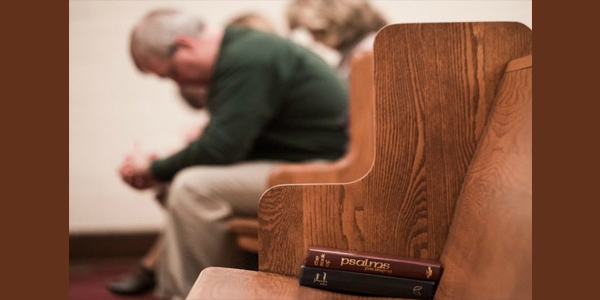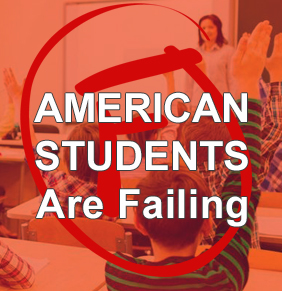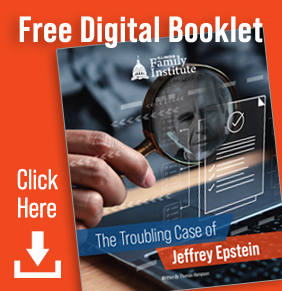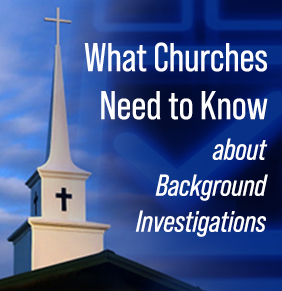
Fake News and the Death of Christianity
Written by Mike Konrad
Mark Twain, quoting Disraeli, once said “There are three kinds of lies: lies, damned lies and statistics.” So it has been with the recent story that White Christians are a minority, To paraphrase Twain again, the reports of Christianity’s demise have been greatly exaggerated.
The headline was framed as if America was becoming outright pagan.
Buried deep inside the story was this admission:
Christians of all races and denominations still make up nearly 70 percent of the U.S. population. But that number is likely to shrink as the much younger populations of Muslims, Hindus, and Buddhists continue to grow. — Huffington Post
It seems the pagans are not quite at the ramparts, yet.
I would love to see the underlying statistics. The first question that hit me would be: Does White Christian include White Hispanics? A considerable number of Hispanics can be considered white. Indeed, anyone familiar with demographics knows that there is a gray area in the stats: White (non-Hispanic) is often a separate category. So is Hispanic (of all races). Often left out is Hispanic (White).
While many Americans might not be thrilled with the number of Muslims in America, their numbers are relatively small. America is barely 1 percent Muslim, and some of that number includes Black Muslims, who often quote the Bible, and have Baptist grandmothers praying for the salvation of their wayward souls and a return to Jesus.
Canada is 3 percent Muslim. Much of Europe is far worse. As nations go, the United States is one of the least Muslim major nations on the planet. You would never know it from the Huffington Post article. Nor would you know that Muslim groups often inflate their numbers.
Islam survives by crushing proselytization. It cannot compete with free thought, so it kills it. A good percentage of the children of those Muslims will become Christian in one generation in America. Islam has no social answer to street preachers.
There is a second matter to consider: the nature of American Christianity; and to a lesser extent Australian Christianity.
While most Western nations have freedom of religion, it is still common that in Europe that you will be born into a denomination and die in it. Northern Germany and Scandinavia are heavily Lutheran. England was historically Anglican. Southern and Western Europe was heavily Catholic. Eastern Europe was heavily Eastern Orthodox Christian. Scotland was Presbyterian/Calvinist. Their culture and their societies still are to this day, even as they lapse into functional atheism. There were some exceptions, but this rule of thumb is broadly true.
America is like no other nation on earth. Christianity is taken quite seriously by a large part of the population. That population has fled mainstream churches for being dead and ritualistic. Mainstream Protestantism is dying out, as is a large part of mainstream Catholicism. Catholicism survives, chiefly because of immigrants who enter America as Catholics. However, it does not take long for those immigrants’ children to end up in Evangelical churches. Barely one half of American Latinos are Roman Catholic. The Evangelicals are growing by leaps and bounds.
Meanwhile, the serious bible believing congregations are thriving. These do not operate like the older denominations. They are rather informal. Many do not show up on statistics. A lot of these groups are members of home church congregations, which are not 501(c)-3 registered; but are just a collection of believers who meet in homes to study the bible, as was done in the first century.
 A new movement is Messianic Judaism, which is essentially Evangelical theology melded with Jewish holidays and history. These people, though absolutely believing that Jesus is both God and Messiah — they would say Moshiach — might not call themselves Christians, in order to distance themselves from the crimes of historic organized Christianity; but be assured they are quite Christian in their theology. There are up to a quarter million of these in America, and most of them are Gentile. The well-known Messianic Rabbi Jonathan Cahn would fall into this mix.
A new movement is Messianic Judaism, which is essentially Evangelical theology melded with Jewish holidays and history. These people, though absolutely believing that Jesus is both God and Messiah — they would say Moshiach — might not call themselves Christians, in order to distance themselves from the crimes of historic organized Christianity; but be assured they are quite Christian in their theology. There are up to a quarter million of these in America, and most of them are Gentile. The well-known Messianic Rabbi Jonathan Cahn would fall into this mix.
A third trend, among many, is to avoid churches altogether, and find a good internet preacher. A classic case would be that of Charlie Garrett at the Superior Word. His theology is classic Evangelical Christian — probably closest to historical Baptist doctrines in theology. He runs a small storefront church in Sarasota, Florida. However, he regularly has 6 to 8 thousand viewers a week show up on his YouTube channel to watch his sermons, bible studies, and prophecy updates.
People watch him from all over the world, many sending him bandanas for his balding head, along with pictures and some stories of their conversions. Charlie Garrett rarely asks for money — though he might recommend an outside charity. He regularly condemns the prosperity preachers. What is amazing is how often people write Garrett and say that they are so fed up with dead churches that his weekly netcast has become their de facto church. Some viewers around the world have opened up their home to groups to watch him when he streams live. It is not even that Garrett asked for this. Rather the mainline churches have so abandoned the gospel that people have flocked to him on YouTube and Facebook.
All his videos and audio are free, and there is no donate button on his site. He and his small congregation pay for almost everything. Yet, he has had Christian visitors fly in from Germany to come to his church. Sometimes, people send him donations to pay for after-church pizzas. All of this is voluntary. He rarely asks for it.
Most interesting is that Preacher Garrett befriended an Israeli Jewish believer with an Arab Christian wife who send him video updates from Israel once a week.
And Charlie Garrett is far from unique. YouTube is full of such good preachers who have bypassed normal channels to appeal to Christians who are fed up with mainline denominations.
Such people fall out of the statistics; but they are growing.
The mainstream media should not be so quick to gloat. Christianity is quite alive and well in America. It is far from a minority. And conservative, Evangelical Christians are growing. What is dying out are the pretenders.
Scrutinizing the past seven years, Pew finds that, amid the rise of the “nones” and other popular talking points, the fate of evangelicals is proving much brighter than Christianity at large. —Christianity Today
A lot of the people who identify as none — meaning they do not identify with any denomination — may be more Christian than one realizes.
Another Calvary Chapel preacher I know bemoans the lack of young people in the churches. Of course, this preacher, an excellent one by the way, is not on the internet. I have told him that were he on the web, he could attract a larger audience. I told him to write an app.
As major religious institutions have corrupted themselves, and as the society-at-large paganizes, Christians have left the decaying denominations and reconfigured themselves in home gatherings akin to the original breeding ground of Christianity in the first century. They tend to avoid denominational affiliation altogether, and to be rather conservative theologically. They do not get numbered in the statistics.
According to the American pollster George Barna, as many as 30,000 house churches were established as of 2009, and it is estimated 6 -12 million Americans attend them. Those aren’t easy figures to track, as you can imagine. — Stand Up for the Truth
As Christ prophesied, “the gates of hell will not prevail against [his church].’
The culture may be going pagan, but the real church (not any denomination) is still going strong.
Mike Konrad is the pen name of an American who wishes he had availed himself more fully of the opportunity to learn Spanish in high school, lo those many decades ago. He writes on the Arabs of South America at http://latinarabia.com. He also just started a website about small computers at http://minireplacement.com.
This article was originally posted at AmericanThinker.com












